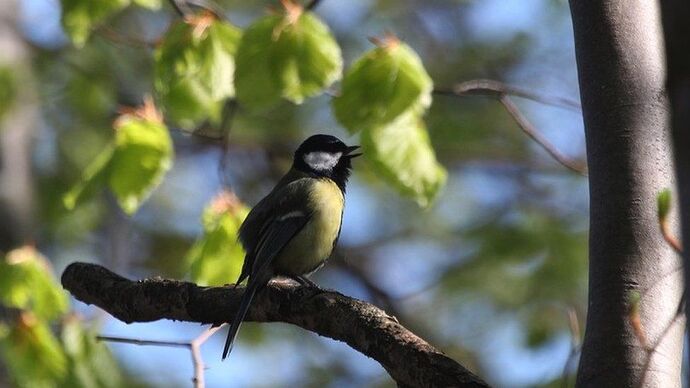"The regular feathered visitors to the bird feeders I hang in a particularly lovely tree outside my kitchen window are a welcome dose of colourful nature in a sometimes repetitive daily schedule.
So the suggestion that my conscientiously topped-up supply of “premium mixed wild bird seed” is anything other than a positive boost for local wildlife has come as something of an unwelcome surprise.
But evidence has been building recently that supplementary feeding could disrupt a delicate ecological balance beyond our windowsills and gardens.
And now a provocative research paper co-authored by a conservation biologist from Manchester Metropolitan University has posed the question of whether it might, in fact, do more harm than good.
According to Alex Lees, who, with his colleague Jack Shutt, published the paper in the journal Biological Conservation, the issue is that there are a few species that are now habitual feeder users - familiar garden visitors including great tits and blue tits. And they appear to be receiving a boost from feeding.
“We know from historical research that these species are increasing in number,” says Dr Lees. This could, he says, be at the expense of other “subordinate” birds.
image sourceAlex Leesimage captionOur most familiar resident birds, including the great tit, compete with summer migrant species
“A blue tit is a dominant species - it tends to win in interactions and fighting for food or quarrelling for nest sites,” explains Dr Lees. "Whereas species like willow and marsh tits are subordinate. They tend to lose those in interactions.
“For willow tits, we know that one of the reasons for the decline is that 40% of their nesting attempts fail because blue tits essentially steal their nesting cavities.”
A constant supply of peanuts and seeds that boosts the number of blue tits and great tits could be helping to drive the continuing decline in the willow tit population. It could also throw off a natural, seasonal ebb and flow in species numbers, Dr Lees says.
“Migrant pied flycatchers are in direct competition with great tits for nesting sites,” he explains. “So, again, by boosting the population of great tits in the UK, we may be tipping the balance in favour of these resident species over those summer migrants.”
To feed or not to feed
It may be the case, says Dr Lees, that the impact of bird feeding - whether it is positive or negative - will depend on where we live.
“[What] we really need to know is where we should be encouraging it. And where we should be discouraging it,” he says.
That will probably mean different advice in urban compared with rural landscapes; whether suet pellets, niger seeds, fat balls and peanuts are replacing a loss of natural resources, or providing lots of additional resources that artificially boost the lot of dominant garden birds.
Dr Lees’ ideas build on previous studies that have shown the impacts that feeding can have on bird populations. Research led by the British Trust for Ornithology (BTO) has shown that supplementary feeding is linked to the reorganisation of communities of birds across the whole of the UK.
Species that, decades ago, were rarely seen in gardens - like goldfinches and wood pigeons - are now regular visitors. And, over the same period, their populations have increased.
Birds will adjust their foraging behaviour around a reliable source of supplementary food; Dr Lees says the diminutive blue tit will fly several kilometres to reach a reliably topped-up feeder.
Mike Toms, from the BTO, says feeding birds can have both benefits and unintended consequences, and he would not suggest that anyone simply take down their feeders.
“If you were going into a pristine habitat and putting out food, that would have consequences,” he says. "But that doesn’t apply within the UK. We don’t have those landscapes.
“You might be in a rural area, but if you live amid farmland - that’s a managed landscape.”
But there are ways in which the 17 million UK households - which collectively spend £250m on 150,000 tonnes of bird food annually - can improve their bird-feeding regime.
image sourceVictoria Gillimage captionA wide variety of food has brought species like the goldfinch into yards and gardens
“If you’re not practising good hygiene at your feeders, then you’re increasing the risk of disease,” says Mike Toms.
“Take them down once a fortnight, clean and disinfect them and make sure they’re thoroughly dry before you put them back out. And you should move them around the garden, because some birds feed on the ground.”
Wherever there is one site or feeding station that many birds are sharing, that is a potential point of disease spread. So if you see diseased birds in your garden, the BTO advises that you should stop feeding all together.
Something else that Dr Lees advocates is wildlife gardening. Leaving part of a lawn wild, planting native trees with seasonal fruits, seeds and berries is likely to enhance a natural, seasonal shift in food sources and to provide for a wider variety of species.
“Bird feeding arises from our desire to help wildlife,” he says. “So we need to be thinking about how we can provide for all of these species.”
Hear more from Dr Alex Lees about the ecological “dark side” of some of our most familiar garden birds on Inside Science on BBC Sounds" https://www.bbc.co.uk/news/science-environment-58346043

